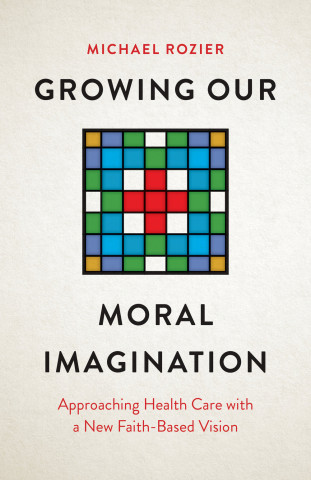
Reviews
This book, therefore, serves as a showcase of recent grassroots movements that work across disciplines, health systems and sectors to address inequalities by using culturally appropriate approaches.
Edited by prominent experts in the field and drawing upon the work of a wide range of expert authors, Obesity Interventions in Underserved Communities seeks to present the current state of evidence and direction of obesity interventions. The book is a substantial contribution to the field; there is nothing comparable on the market.
A fascinating book. Recommended for anyone who is trying to understand the variety of challenges encountered in implementing obesity intervention programs, as well as the ways that those challenges have been met.
Few health issues rival obesity in impact and the number of individuals affected. The nation is beginning to address obesity where the financial, economic, and human costs are greatest—underserved communities. History will show this book as a shining move toward establishing a roadmap for this effort.
Book Details
Foreword
Introduction. Advancing a New Conversation about Obesity in the Underserved
Part I: Literature Reviews
Chapter 1. The Potential of Early Childhood Education as a Successful Obesity Intervention
C
Foreword
Introduction. Advancing a New Conversation about Obesity in the Underserved
Part I: Literature Reviews
Chapter 1. The Potential of Early Childhood Education as a Successful Obesity Intervention
Chapter 2. Latino Childhood Obesity
Chapter 3. Is That All There Is? A Comprehensive Review of Obesity Prevention and Treatment Interventions for African American Girls
Chapter 4. Dietary Acculturation in U.S. Hispanic Communities
Chapter 5. Obesity in Correctional Facilities: A Review of Epidemiology and Etiology
Chapter 6. Weight Loss Interventions in the Mexican American Community
Part II: Commentaries
Chapter 7. In the Way or On the Way? Asking Ourselves about the Role of Contextual Factors in Community- Based Obesity Research
Chapter 8. The Importance of Public Safety in Promoting Physical Activity and Curbing Obesity within African American Communities
Chapter 9. Military and Civilian Approaches to the U.S. Obesity Epidemic
Chapter 10. A Healthy Weight Disparity Index and Reducing Rates of Obesity and Overweight in the United States
Part III: Reports from the Field
Chapter 11. Obesity Management Organized by Adolescents in Rural Appalachia
Chapter 12. Winning Over Weight Wellness: A Culturally Relevant, Interactive Health Program for Underserved Faith- Based Groups
Chapter 13. Latino Migrant Middle School Students as Videographers: Learning about Healthy Choices
Chapter 14. Creating Healthy Environments in Los Angeles through Joint Use of School Facilities
Chapter 15. The Idaho Partnership for Hispanic Health: Enabling Healthy Eating and Active Living in Rural Idaho
Chapter 16. Alliance for a Healthy Border: Obesity Prevention in Underserved U.S.- Mexico Border Communities
Chapter 17. Comienzo Sano: Familia Saludable: Addressing Latino Childhood Obesity through a Community- Based Participatory Research and Bilingual Family- Focused Curriculum
Chapter 18. Fine, Fit, and Fabulous: Addressing Obesity in Underserved Communities through a Faith- Based Nutrition and Fitness Program
Chapter 19. Changes for Life: A Primary Care– Based Multidisciplinary Program for Obesity in Children and Families
Chapter 20. The West Virginia PEIA Weight Management Program: An Innovative Approach to Obesity Prevention and Treatment in Appalachian Communities
Chapter 21. SOPHE: Sustainable Solutions for Health Equity
Chapter 22. The Prevention of Obesity in Homeless Shelter Settings
Chapter 23. Get FIT (Fitness Integration Training): A Program to Reduce Obesity and Metabolic Syndrome in People with Intellectual and Developmental Disabilities and Their Caregivers
Chapter 24. The PILI 'Ohana Project: A Community- Academic Partnership to Eliminate Obesity Disparities in Native Hawaiian and Pacific Islander Communities
Chapter 25. Nutrition Education at Mobile Markets: Community- Engaged, Evidence- Based Interventions to Address Obesity in Low- Income Neighborhoods in Milwaukee
Chapter 26. Report from a Pediatric Weight Management Program: Lessons Learned from Six Years of Experience with a Largely Medicaid- Based Population
Chapter 27. Healthy Children, Strong Families: Obesity Prevention for Preschool American Indian Children and Their Families
Chapter 28. A Structured Weight Management Program for Obese Patients in an Urban Safety- Net Hospital Center
Chapter 29. Creating Safe Neighborhoods for Obesity Prevention: Perceptions of Urban Youth
Chapter 30. Peer Influence on Obesity- Related Behaviors: Design and Rationale of the Waipahu HART Project
Chapter 31. Walking Groups: A Simple, Affordable Intervention Program for Public Housing Developments
Index





